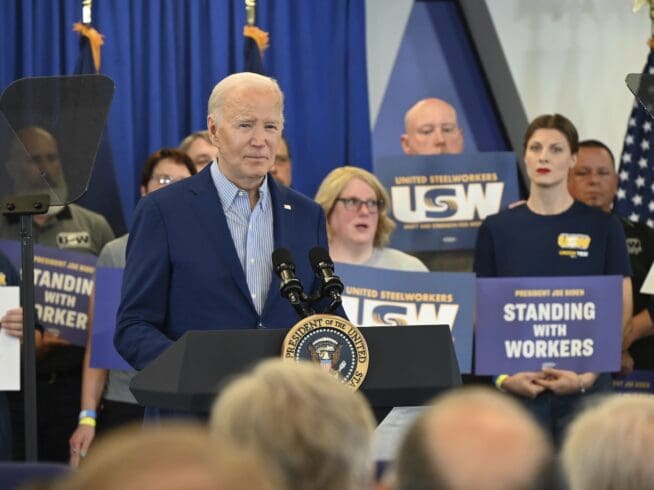Michigan’s economy, labor force projected to grow over the next two years
‘We are excited to see what the next chapter holds for the state,’ University of Michigan economists said in a new report.

Michigan’s economy has almost completely recovered from the downward effects of the COVID-19 pandemic, new research shows.
In a November report, University of Michigan economists predicted that the state’s economy and labor force will continue to grow, albeit slowly, over the next two years.
The United Auto Workers Strike against the Big Three automakers — General Motors, Ford Motor Co., and Stellantis — presented Michigan’s economic forecast with a unique challenge, but the report indicates that its impact could have been much worse if the strike continued.
At the time the report was written, the UAW and automakers had reached tentative agreements and workers had returned to work during the ratification process. Researchers operated under the assumption the tentative agreements would be adopted while compiling the report.
UAW members ratified their new contract on Nov. 20, officially ending the negotiations with the Big Three. The new contract is a major win for the UAW, and includes the reinstatement of cost-of-living allowances, above 33% wage increases, annual bonuses for retirees and an end to wage tiers for new hires. Additionally, workers will receive a $5,000 ratification bonus.
Over 40,000 workers from all three companies went on strike at assembly and distribution plants across the country.
“The UAW’s strategy of starting with a limited number of strike targets, the generally strong economy, and the strike’s relatively timely resolution all combined to limit its spillover effects on the broader economy,” the report reads.
The auto industry continues to be an essential part of the state’s economy, meaning the outcome of the contract negotiations affect Michigan more than any other state. There are approximately 66,400 UAW workers employed at Big Three facilities in Michigan — nearly half of the national total and more than any other state “by a wide margin,” according to the report. Roughly 17,600 UAW workers in Michigan were among those on strike.
The U-M economists estimate 37,100 jobs – including striking workers and those who were laid off or lost their job as a result of the strike – were lost in Michigan by the strike’s sixth week. Residents lost about $114 million in combined income throughout the strike; however, signing bonuses and wage increases should offset the loss of personal income.
Similarly, the economists estimate the strike reduced total U.S. employment by 141,000 jobs and personal income in the United States by $485 million cumulatively over those six weeks.
“If the strike had continued through the end of November, income losses would have reached over $1 billion, and job losses would have been significantly larger, especially if the UAW had announced further additions to the strike,” the report states. “While the strike was painful to those who were directly involved, its resolution spared the economy from the larger spillover effects of a longer-lasting dispute.”
The end of the UAW strike comes as Michigan’s economy is on the verge of completely recovering from the pandemic recession. This is despite supply chain shortages, high inflation and rising interest rates.
State employment data used by the researchers showed that, as of September, the amount of employed Michiganders was nearly 1% higher than before the pandemic. The state’s job count is expected to reach pre-pandemic levels sometime in the first quarter of 2024, a feat which was delayed from this fall due to an unexpected 10,000 job losses in September and the UAW strike.
The University of Michigan economists expect the state’s unemployment rate to remain around 4% during their forecast period from 2023 to 2025. Their reasoning stems from a tight local labor market, as well as Michigan’s aging workforce and slow population growth.
Michigan’s blue-collar industries, like mining, construction and manufacturing, have recovered the most of any other industry in the state from the pandemic recession. The report found that service industries that don’t require a college degree, like retail and hospitality, have been the slowest to recover to pre-pandemic employment levels.
The economists project Michigan’s personal income per capita to increase to $63,800 in 2025 — roughly 30% higher than in 2019.
The report identifies several impending risks to the future of Michigan’s economy: high interest rates, student loan repayments, a possible federal shutdown next year, high inflation and the effects of war overseas on foreign goods. On the upside, the researchers believe that because these factors are more of a national threat, the odds of a state-specific impact are lower.
“We hope that Michigan’s newfound economic resilience signals that the state has turned the corner from the boom-and-bust economy of the past,” the report’s authors said. “We are excited to see what the next chapter holds for the state.”




